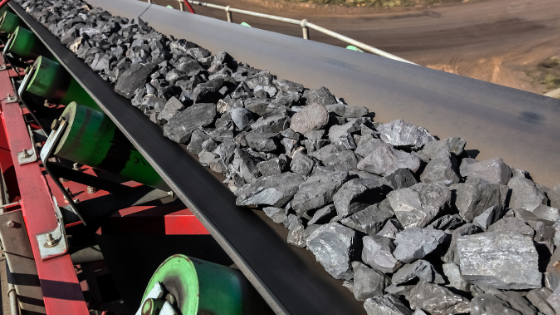Editors note: America is too dependent upon China for critical minerals. CPA member American Manganese has a way to reduce that dependency in a cost-efficient and environmentally friendly way.
“You cannot make steel without manganese. And if you cannot make steel – the world stops.” That’s the glass of cold-water quote from former BHP Billiton CEO Brian Gilbertson, more than a decade ago as the world toppled into the finance-driven 2008-09 Great Recession.
[Larry Reaugh | June 2, 2020 | The Economic Standard]
Fast forward to 2020: Right about now, we’ve all become armchair experts on what the world looks like when it simply stops. Thanks to the COVID pandemic, there’s never been a hard shut-down of the global economy on this scale. But as we emerge from our shelters to a post-COVID environment – or is it merely the pause before pandemic 2.0? — the focus around the world is on re-igniting our economic engines.
And now as it was then, manganese is a big part of the story: Who makes it, and where? How confident can we be that global supply chains will be secure and stable?
And this time, with the pandemic’s flat-lining of the global economy making the 2008-09 recession look like a picnic, we can’t plead ignorance about the importance of critical materials to economic revival.
Especially when it comes to manganese. Its importance is no secret, and its strategic status dates back decades. Witness the Time Magazine story from October 13, 1941, just weeks before Pearl Harbor, declaring manganese “Strategic Metal #1.” The story noted that the U.S. had abundant manganese deposits, but all were low grade, at a time technology was lacking to process the raw ore efficiently. As a result, on the eve of America’s entry into World War II, the U.S. depended on imports of manganese, specifically from Russia. Even before Pearl Harbor, German naval blockades made it a mortal danger to import manganese supplies from different parts of the world. Cargo ships were at the mercy of the German U-boat fleet. The sinking of The Cathrine, a UK ship built at America’s Great Lakes shipyard made news at the time. A footnote, but one relevant to our story today: The Cathrine’s precious cargo was 3700 tons of manganese ore.
Those days of Russian dependency are gone; now it’s China that’s the world’s leading manganese specialty metal producer, while U.S. manganese production sits at zero. Like the rare earths, manganese appears on the official U.S. Critical Minerals List; unlike the rare earths – in 2019, declared an emergency material under the U.S. Defense Production Act – manganese is no longer Strategic Metal #1.
Yet manganese is far from being an obscure metal with little importance. In fact, there’s a good chance you use it every day, as it is contained in your car, cell phones, bridges, staples, household appliances – virtually every item that has a steel component. With thirteen pounds required to make one ton of steel, manganese is the fourth largest traded metal commodity in the world. As Gilbertson knew, there is no substitution for manganese in the manufacture of steel – without it you end up with a brittle iron product with no ductility or strength. There is no substitution for manganese in the making of steel.
And then there’s manganese’s new role in lithium ion EV Batteries, fertilizers, and aluminum alloys. Manganese is the backbone of all modern industrial components – not only in the commercial economy, but for the Army, Navy, Air Force and Space Force infrastructure as well.
All of which is to say that zero production is no place to be when it comes to manganese.
The good news is that much has changed in the mining industry’s understanding of processing in the decades since Time Magazine touted manganese. Take my company, American Manganese, with a large but low-grade deposit, Artillery Peak in Arizona. We knew we’d need to make a quantum-leap in processing capability in order to bring our mine into production.
New ideas often start with a look back to old ideas that were ahead of their time. For us, that meant combing through reports done by the old U.S. Bureau of Mines (BOM) – discontinued 25 years ago, but still legally on the U.S. statute books; maybe it’s time to bring back the Bureau of Mines? – which in the 1950s had pioneered a method of floatation and electrolysis that was pilot-tested over several years, but eventually deemed too costly and wasteful. With new process improvements – and more than $10 million in R&D investment on our part, for our patented water efficient process we were able to treat the low-grade manganese deposits in an environmentally friendly closed loop manner to produce Electric Manganese Dioxide or Electrolytic Manganese Metal – a material on the U.S. Government’s National Defense Stockpile acquisition list.
And one process improvement led to another: That same technology is the cornerstone of our RecycLiCo process — our EV battery recycling technology. As a result, we’re positioned to meet two national needs: the resumption of advanced manganese material production in the U.S., and EV Battery recycling to recapture manganese, lithium, and cobalt from spent lithium-ion batteries that would otherwise be destined for the landfill.
For most of the past decade, Gilbertson’s quote – without manganese, the world stops – was taken as hyperbole, a sharp statement meant to grab our attention. It turns out it was a harbinger of what’s in store for any nation that lacks the material inputs that we spin into the advanced manufacturing that drives technology, supports economic growth, and keeps our militaries strong.
We’ve seen enough of life when the world stops. As we start our economic engines, it’s time to get back to the business of making manganese.
Larry Reaugh is CEO of American Manganese, Inc. which has developed RecycLiCo, its patented EV battery recycling process.
Read the original article here.













